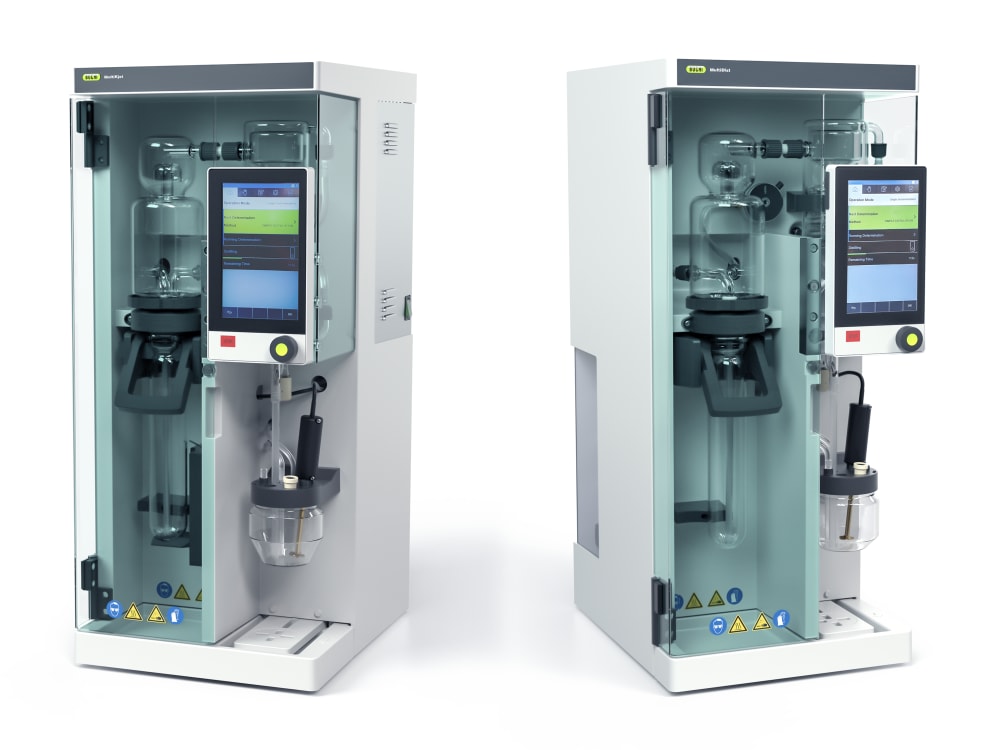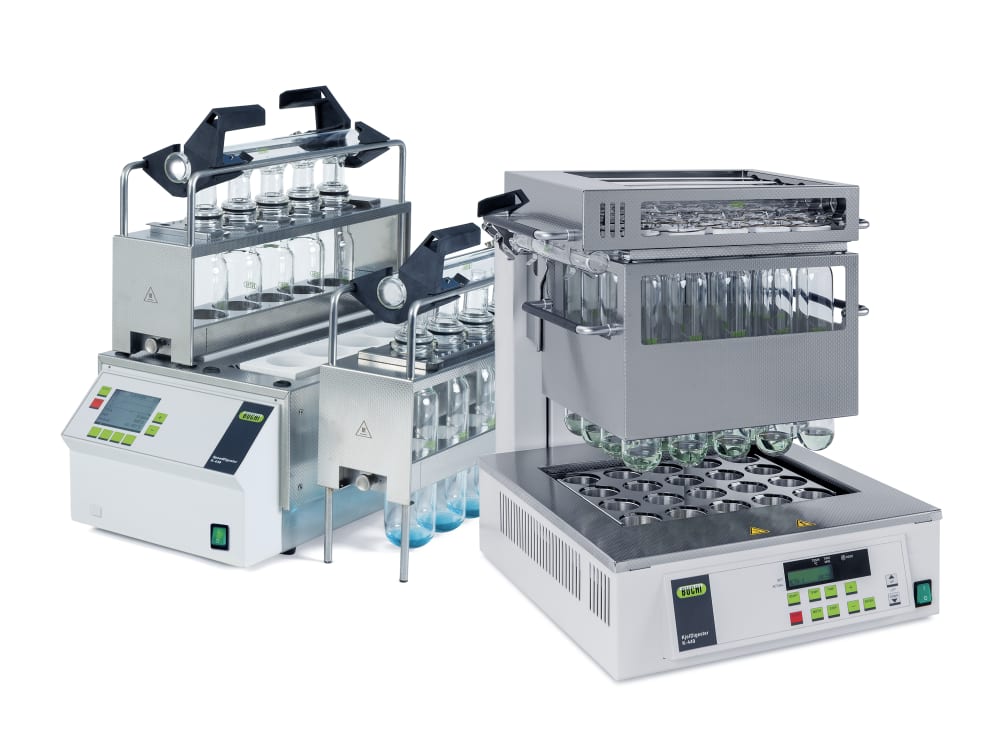Steam Distillation
Steam distillation procedure
Steam distillation is a separation process used to isolate compounds for quantification, such as ammonia originating from proteins. The main advantage of steam distillation over conventional distillation is that the steam distillation procedure is carried out at lower temperatures and components can be separated from a mixture below their decomposition point.
Steam distillation vs simple distillation
Simple distillation is used in chemistry to separate two liquids with boiling points that differ by at least 25°C or to separate a liquid from a nonvolatile compound that has a higher viscosity. In the latter case, heat is added to the mixture to reach the boiling point of the more volatile compound, the resulting vapor is collected and immediately condensed back into liquid form. However, the distillate may be only partially pure.
The steam distillation technique is one of the distilling processes that is suitable for the distillation of heat-sensitive compounds. The steam distillation procedure involves bubbling hot steam through the mixture to be distilled, lowering the boiling points of the compounds. The condensate is collected, and the resulting aqueous solution can be used in combination with titration techniques for quantification of the analyte. Steam distillation is heavily used in separation of aromatic compounds, oils from natural products, as well as fragrance production and Kjeldahl nitrogen determination.
The following analytes can be separated by the steam distillation technique and quantified accurately.
Table 1: Table of analytes suitable for steam-distillation extraction.
| Analyte | Matrix | Quantification Method | Related Norms |
|---|---|---|---|
Protein (nitrogen), TKN, TVBN | Food, beverages, pharmaceuticals, feed, waste water | Potentiometric / Colorimetric Titration | AOAC 2001.11 AOAC 920.87 ISO 937 ISO 3188 |
Ammonium, nitrite, nitrate (Devarda), urea | Fertilizer, soil, cosmetics, hair dye | Potentiometric / Colorimetric Titration | AOAC 892.01 AOAC 955.04 83/514/EEC |
| Alcohol | Wine, beer, spirits | Densitymeter | EC 2870/2000 |
Volatile acids | Wine, juice | Potentiometric Titration | OIV-MA-AS313-02 |
Sulfite, Sulfur dioxide | Wine, beer, dried fruits, seafood | Potentiometric Titration | AOAC 962.16 |
Cyanide, Amygdalin | Food, feed, waste water | Complexometric Titration | ISO 2164-1975, AOAC 915.03 |
VDKs | Beer | UV-Vis Spectrometry | |
| Phenol | Soil, waste water | UV-Vis Spectrometry | ISO 6439:1990 DIN 38409-H16-3 |
Formaldehyde | Textiles, maple sirup | UV-Vis Spectrometry | ISO 14184-1 AOAC 964.21 |
Limonene (essential oils) | Juice, fragrances, hops | Redox Titration |
Steam-volatile analytes
Alcohol
Alcohol content must be determined in food and beverages due to legal and taxation purposes. After the steam distillation technique is performed in a suitable Distillation Unit, the alcohol content is determined via a densitymeter, typically a pycnometer or an oscillating U-tube.
SO2
Sulfite is a commonly used preserving agent used in food such as dried fruits and seafood, as well as in beverages such as wine and beer. Since a minor fraction of people experience allergic reactions to this compound, the SO2 content must be monitored for compliance with statutory maximal limits. As part of the labelling requirements, the SO2 content must be declared as well. For SO2 determination, we recommend the usage of the optimized Monier-Williams method with a Potentiometric Titration in diluted H2O2 solution.
Volatile Acids
The fraction of volatile acids is an important parameter for the taste of wine. If wine is exposed for too long to air, alcohol is converted to acetic acid and adds an unpleasant, sour taste to the wine. By degassing carbon dioxide and using tartaric acid before Steam Distillation, the volatile acidity can be determined.
Vicinal Diketones
Vicinal diketones (VDKs) are a group of flavor components in beer. They are formed during beer fermentation and determine also the taste of beer. Excessive or unexpected VDK levels can be a sign of either bacterial infection or improper fermentation. Monitoring and controlling VDK levels can play an important role in flavor formation in beer production.
Ammonium, phenol, cyanide
In environmental analysis, multiple parameters can be determined in soil and water samples such as the ammonium content, the phenol index and the cyanide content. Also, in almond-based food samples, the amount of toxic cyanide plays an important role.
Formaldehyde
Textiles are monitored continuously regarding the level of formaldehyde as contaminants and low levels are prerequisite for obtaining certain certifications. In the glue industry, the formaldehyde content determines the effectiveness of the aminoplastic adhesive and can be determined via the steam distillation procedure. Furthermore, the formaldehyde content in wood materials is used for classification in accordance with the mandatory emission limits.
Steam distillation of essential oils
Extraction of essential oils by steam distillation is one of the most common methods used to obtain high purity products. Essential oils are used in aromatherapy, flood flavoring, cosmetics, fragrances and others. Legislation for specific product uses, such as food flavouring, cosmetics and additives in animal feed, also relates to essential oils. These ingredients must be carefully assessed and labelled to guarantee consumer safety.


